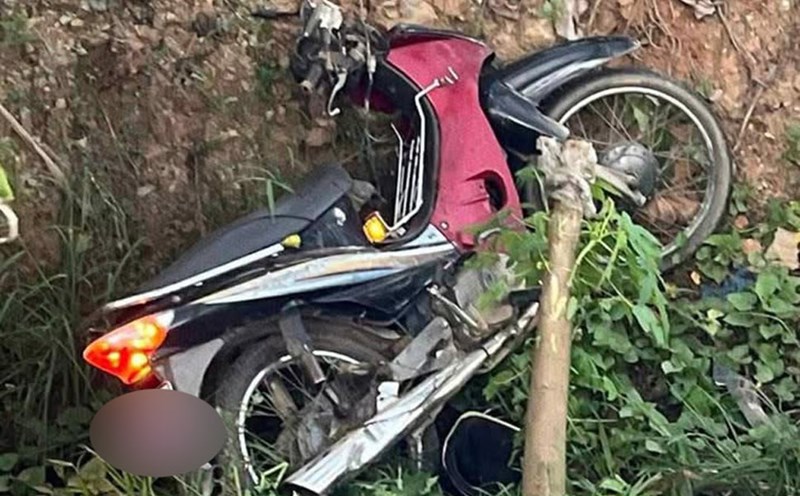Speaking at the workshop, Mr. Dao Minh Tu - Permanent Deputy Governor of the State Bank of Vietnam - affirmed: "Green finance, including green credit, is not a new issue but is receiving more and more attention from countries around the world as well as Vietnam, especially in the current context of the need to promote the mobilization of resources to promote economic restructuring associated with growth model innovation, in order to achieve economic prosperity, environmental sustainability and social justice; towards a green, carbon-neutral economy and contributing to the goal of limiting global temperature increase".
Vietnam has many favorable conditions to develop green credit
Green credit and ESG implementation are an inevitable trend for sustainable development, one of the important resources to achieve the national green growth target, a solution to help credit institutions reorient their business activities towards sustainability, approaching international standards, thereby affirming their position, enhancing competitiveness, expanding cooperation and business opportunities; at the same time, for businesses, green credit is a resource to support businesses to improve technology, and transform green production.
Mr. Dao Minh Tu commented that Vietnam has many favorable conditions and opportunities for development, thanks to clear orientations and regulations.
Firstly, the Law on Environmental Protection (2020) and guiding documents of the Law have stipulated green credit, a roadmap for developing green credit, support and encouragement measures for developing green credit, creating a legal corridor for green credit activities of the banking system.
Secondly, in the National Strategy on Green growth through the recent stages and resolutions of the Government on socio -economic development, the determination of the Government and the Prime Minister in implementing "Green conversion - Digital transformation", fast and sustainable development to achieve economic development goals 2 numbers for the period of 2026-2030. In particular, the Government and the Prime Minister all put the tasks and requirements for the banking industry to promote green and green banks;
Thirdly, on the basis of these policy frameworks, over the past time, the banking sector has entered drastically, proactively and implemented solutions to promote green credit activities and have achieved many positive results on awareness, the number of credit institutions sponsor capital for green fields, scale and growth rate of green credit balance: From only 15 credit institutions participating in 2017, the amount of green debt has been grown. The period of 2017-2024 reached over 22%/year, the following year was higher than the previous year, higher than the growth rate of general credit balance for the economy. These figures are very encouraging, but the ratio of green credit to total new credit balance accounts for about 4.6%, showing that green credit in Vietnam still has a lot of room to develop. Set urgent requirements in accelerating and taking advantage of that room.
In practice, banks and businesses all face many difficulties such as: Not having a National Green Classification List, general regulations on ESG for businesses to practice, meeting increasingly strict sustainable development requirements; Risk assessment tools are still limited, long capital recovery time, unclear financial efficiency; Higher requirements for governance, quality of banking human resources in the fields of environment, society, and climate to identify, evaluate management, supervise credit granting as well as advise and support customers to meet new international criteria on emissions.
This is one of the challenges for Vietnam when this policy is set for all countries. Those bottlenecks require a new approach - more comprehensive, more flexible and synchronous between policies - markets - legal corridors.
In that spirit, the Permanent Deputy Governor of the State Bank listened to representatives of State management agencies, domestic and foreign experts, enterprises, associations, and credit institutions focus on exchanging and discussing the following issues:
The role and contribution of green credit in sustainable financial development strategies and implementing solutions to mobilize resources to implement national green growth strategies. Because the story of green credit capital is a huge problem, the need of businesses, projects, and greening programs must be to invest in long-term capital. Some commercial banks are still short-term capital sources, so they need to contribute to projects and businesses that need investment, especially issues related to environmental protection, carbon emission reduction or Net Zero implementation by 2050.
The growth rate of green credit has been fast, over 22,2%/year compared to 15%/year previous year. The banking industry has developed a Circular, along with a number of specific and proactive decisions to consider from the perspective of banks, international credit institutions, and the World Bank ADB, support from countries in the region. However, a way to quickly identify some subjects and some portfolios for banks to provide green credit loans requires a preliminary legal corridor to facilitate credit institutions to focus on lending.
Assessing the current situation and difficulties in implementing green credit in Vietnam in recent times. From the perspective that commercial banks can assess the current difficulties in terms of legal basis, guidance, processes as well as implementation methods to make capital more bold. Banks themselves also need to recognize the problems seen by businesses, to study the criteria for business organizations and projects to be on the green list. So that both sides can boldly borrow and lend, they cannot hesitate.
International experience and solutions for credit institutions to promote green credit activities, as well as solutions for Vietnamese enterprises to access green credit more easily.
Urgentness in specific assessment criteria
Citing the example of 1 million hectares of rice in the Mekong Delta, the Permanent Deputy Governor of the State Bank of Vietnam affirmed: "Vietnam is the first country to have specific policies and projects and create an important step forward in the Sustainable Development Strategy, creating high-quality rice crops and minimizing the use of chemicals. This has been and is being actively implemented."
This is a typical example of green credit, a typical example of the story if projects have synchronization in legal basis, implementation, awareness from authorities at all levels, businesses, banks, green credit economic organizations, and farmers, the effectiveness will be seen - Mr. Tu added.
This is an environmental story associated with the green economy, including green finance, green banking, and green credit. Looking at the macro perspective, Mr. Dao Minh Tu said: "We have a preliminary legal corridor, but looking at each specific project, we do not have clear evaluation criteria. This is an urgent matter right now".
The Standing Deputy Governor of the State Bank of Vietnam affirmed that the Workshop "Unblocking Green Credit" is an opportunity to listen to opinions and exchanges from experts, representatives of management agencies, research policies, and businesses to have different perspectives revolving around the implementation of green credit activities in the banking industry, the application of mechanisms and policies into practice.
These will be contributions and suggestions for management agencies in planning policy mechanisms, as well as implementing green credit activities in practice of credit institutions, creating motivation to unblock credit flows in the banking sector for green goals and sustainable development.












